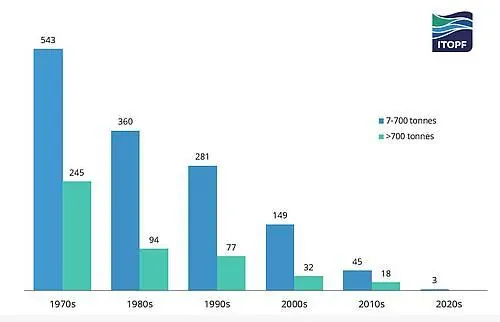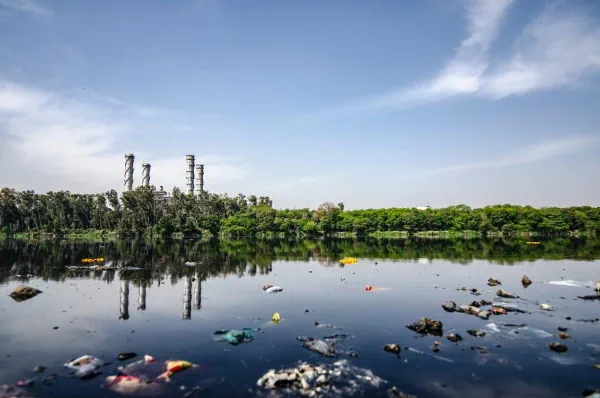
The Most Polluting Industries in 2022

Table of Contents
The Most Polluting Industries in 2022
Several industries have driven the climate change crisis despite the stakeholders knowing the underlying dangers. Looking back at the last years, we agree that environmental pollution is at an all-time high in 2022. Many of our animals are endangered. Ultimately, we have felt that we are also in danger as lots of improperly treated industrial wastes pollute the water we drink and the air we breathe.

Factory Emitting Smoke - pexels.com
Worse still, the production of industrial waste is still on the increase across the world. Some industries produce more toxic wastes than others. Today, we look at the top 5 most polluting industries in 2022.
How Have We Arrived at this List?
There is no global standard for classifying polluting industries, as some countries want governments to adopt methods that take care of their economic and political interests. So, we thought it prudent to start by clearly explaining our methodology here.
Our research was driven by the following:
- The amount of risk that industrial waste poses to the approximately 8 billion people across the world today
- The risk it poses to future generations
To accurately work out the degree of danger, we evaluated each of the types of pollution troubling our planet to determine the risk they pose.
Here are the 5 types of pollution:
- Noise
- Air
- Water
- Light
- Soil
While we all agree that all of them are undesirable, growing evidence has established that air pollution poses the greatest danger to human life. According to WHO, air pollution will likely kill about 7 million people in 2021, assuming everything remains constant. According to a study, air pollution is responsible for the growing number of COVID-19 deaths.
Without considering people who are enduring different medical conditions due to air-pollution–related ailments, the above figures are a clear indicator that sectors that lead to these deaths should appear in the list of the most polluting industries.
There is also adequate evidence that water pollution is responsible for many deaths across the world. The WHO estimates that polluted water cause approximately 500,000 diarrheal deaths every year. Billions of tons of plastics dumped in oceans also lead to the death of millions of children and animals every year.
The number of deaths that soil, light, and noise pollution causes are relatively low. For example, long-term exposure to noise causes 12,000 premature deaths per year. It also causes thousands of new heart diseases.
So, water and air pollution are the main factors that influence our list. The Earth naturally releases carbon. So, let’s see why experts blame global warming on these industries.
Is the Natural Carbon Cycle Harmful?
The Earth releases carbon from living things and oceans. At night, plants release the same gases. However, during the day, they absorb them again. Animals, on the other hand, breathe in Oxygen and release carbon dioxide 24/7. The Earth relies on this process known as the natural carbon cycle to ensure a proper balance in the atmosphere.
As soon as humans began extracting fossil fuels, the amount of carbon in the atmosphere increased beyond the required amount. The ocean and living things can only reabsorb approximately 40% of this. The rest remains in the air, trapping heat and causing global warming.
Top 5 Polluting Industries
Now that we understand the impact of pollution, let’s see the ain polluting industries:
1. Energy
It should not surprise any of us that the energy industry makes it to the top of this list. It contributes close to 30% of greenhouse gasses.
We depend on fuel to accomplish our everyday tasks like charging our phones and long-haul flights. To make products like plastics and medicines, we also need oil and coal.
The final agreement of the 2021 United Nations Climate Change Conference held at SEC Center in Glasgow, Scotland, UK, from 31st October to 13th November 2021 explicitly mentions coal as the single most significant contributor to climate change. Previous agreements have never mentioned gas, oil, or fossil fuel in general.
The participating 197 countries agreed to “phase down” the use of unabated coal power. More than 140 countries agreed to reach net-zero the emissions.
Population increase has helped increase the demand for oil across the world. The current pandemic has done little to reduce its demand. In 2006, we were consuming 85 million barrels per day. By 2019, the consumption of crude oil had hit 1000.3 million barrels per day. In 2020, nonetheless, it dropped slightly due to the COVID-19 pandemic.
However, the International Energy Agency forecasts that the industry could recover about 60% of the oil demand lost in 2020 and 2021. It expects world consumption to increase by at least 5.4 million barrels per day. So, the average daily consumption should be close to 100 million barrels this year.
From the evidence, we can see that we will likely release more C02 into the atmosphere in 2022 than we did in 2021. Consequently, we may keep warming up the planet earth and put the lives of many species in greater danger.
Nonetheless, other than the atmosphere, the ocean is also at risk. The increase in demand indicates a higher potential for oil spillages, which could endanger sea life substantially.
Oil spills are known to poison birds and fish. They also damage the insulation of fur-bearing animals.
Last year, we recorded no large spills across the world. In total, about 1,000 tonnes was spilled in 2020, which was the lowest annual figure for five years in a row.

Number of medium and large spills per decade (7-7000 tonnes medium, over 7,000 large) source
Despite the reduction in the magnitude of oil spills in the past few years, we cannot ignore the risk that the increase in demand presents.
To minimize the risk here is what we should do:
- Use renewable energy
- Work with elected leaders
- Campaign against industries that are over-relying on non-renewable energy
- Use sustainable energy options
5 Biggest Energy Companies in the World (2022)
| Name | Founded | Headquarters | Revenue |
|---|---|---|---|
| Saudi Aramco | 1933 | Dhahran, Saudi Arabia | $360B |
| ExxonMobil | 1999 | Texas, United States | $265B |
| Shell | 1907 | London, United Kingdom | $262B |
| Chevron Corporation | 1879 | California, United States | $162B |
| Total Energies | 1924 | Courbevoie, France | $184B |
2. Transport
Transport contributes over 20% of carbon emissions. It is divided into two parts:
- Commercial freight: 40%
- Passengers travel: 60%
Many people own cars today, and passenger vehicles emit an average of 4.6 metric CO2 per year. This makes land-based travel a significant threat to the environment.
Here is what we can do to minimize the impact of transport on the environment:
- Limit international travel
- Use alternative means of transport, where possible
- Opt for public transport whenever possible
3. Agriculture
We rely mainly on agriculture for food. Due to the ever-growing world’s population, the demand for meat and dairy products is steadily increasing.
The unfortunate reality is that agriculture contributes to between 13 and 18% of the world’s greenhouse gas emissions. Agricultural emissions are mainly nitrous oxide and methane. These gases come from cows.
We can divide the emissions into four categories. These are:
- Enteric fermentation
- Manure storage
- Feed production and processing
- Transportation of products
- Manure storage
- Another issue that contributes to global pollution is the clearing and burning of land for agriculture. Humans engage in deforestation to find fertile land. In the process, they reduce the land cover necessary for sustaining the natural carbon cycle. As a result, we have more carbon in the atmosphere than necessary.
- Burning land increases the emission of carbon dioxide. Since it also eliminates the plants you need to absorb these gasses, burning land makes agriculture one of the leading polluting industries.

Forest on fire - pixabay
Deforestation has many negative long-term consequences. Imagine what would happen if the Amazon rainforest is complexly destroyed to create room for agriculture. In 2020, the Amazon Conservation Organization says the destruction of the forest increased by 21%. Moreover, a scientist at the University of Sao Paulo says the rainforest is most likely to hit a tipping point in less than two decades. After that, it will start drying up and turn into a savannah.
Nonetheless, we can do the following to limit the impending danger:
- Go vegan
- Eat organic meat
- Become a member of a movement that fights deforestation for agriculture
The 2021 United Nations Climate Change Conference explored this in detail. Over 100 countries pledged to reverse deforestation by 2030. The US and China pledged to work together to lower methane emissions and conserve forests.

The26th UN Climate Change Conference logo
4. Fashion Industry
The fashion industry employs millions of people directly and directly across the world, but it threatens human existence. If you add its carbon emissions to the mass of clothes wastes that people damp in diverse ecosystems worldwide, you understand why it is in this list.

Fabric and plastic on a body of water - pixabay
Consider that the fashion industry currently produces 10% of the global carbon emissions. By 20150, it could consume up to a quarter of the world’s carbon budget.
Some fashions don’t have the same effect. We are talking about fast fashion. The problem is that most low-quality materials are often manufactured by countries that over-rely on coal and gas.
We can do the following to prevent this trend:
- Buy high-quality clothes
- Rents some clothes
- Buy quality second-hand clothes
5 Biggest Fashion Companies in the World (2022)
| Name | Founded | Headquarters | Revenue |
|---|---|---|---|
| LVMH | 1987 | Paris, France | $60B |
| Nike | 1964 | Oregon, United States | $37B |
| Dior | 1946 | Paris, France | €53B |
| Inditex | 1985 | Municipality of Arteixo, Spain | €20B |
| TJX | 1987 | Massachusetts, United States | $39B |
5. Food Retail
Our ever-growing population has caused a considerable gap between food supply and demand. Ironically, we are wasting several tonnes of food every day. For example, in the UK, people waste as much as 1.9 million tonnes of food yearly.
Food retailers waste lots of packaging per day across the world. This increases plastic pollution, one of the leading causes of thousands of marine mammals’ deaths. Cows, whale, dolphin, and porpoise species are some animals that consume plastics and die after a short while.

Supermarket shelves - pexels
So, we should do the following to reduce this risk:
- Stop plastic packaging
- Use reusable shopping bags
- Go to sustainable supermarkets
Conclusion About the Most Polluting Industries in 2022
As human beings, we rely on the above industries for food, clothing, shelter, and more. However, we should focus on getting these essentials without jeopardizing the future. To achieve this goal, we should devise the best green solutions and implement the suggestions we have seen here.